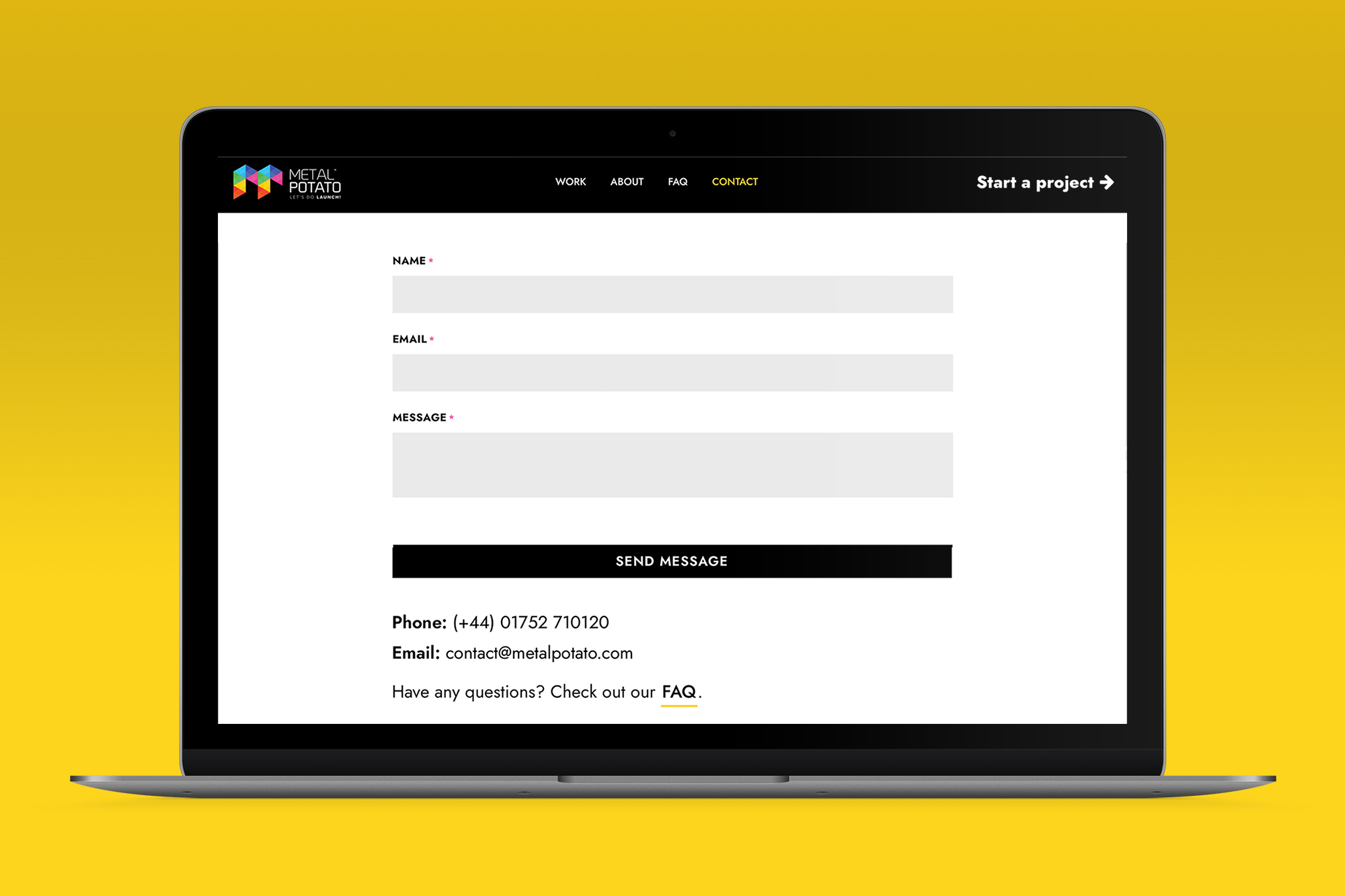Let’s begin our journey into the world of SEO copywriting and uncover the secrets to creating content that not only ranks higher in the SERPs but also engages and converts your target audience.
1. Understanding SEO copywriting
What is SEO copywriting?
SEO copywriting is a strategic approach to creating content that is optimised for search engines while also appealing to your target audience. It involves leveraging keyword research and SEO best practices to craft compelling copy that addresses user problems, satisfies user intent, and drives desired actions.
The importance of SEO copywriting
In today’s digital landscape, where competition for online visibility is fierce, SEO copywriting plays a crucial role in helping your website stand out from the crowd. By implementing these copywriting techniques, you can increase your website’s visibility, attract qualified traffic, and ultimately drive conversions. SEO copywriting is not just about sprinkling keywords throughout your content; it’s about understanding your audience, crafting engaging copy, and providing value to your readers.
2. Key elements of SEO copywriting
Audience-specific keywords
One of the first steps in effective SEO copywriting is conducting thorough keyword research to identify audience-specific keywords. These keywords are the terms and phrases that your target audience is using when searching for information related to your industry, products, or services. By incorporating these keywords naturally into your content, you can ensure that your website appears in relevant search results and attracts the right audience.
Writing for people, not search engines
While it’s important to optimise your content for search engines, it’s equally important to write for people. Your content should be informative, engaging, and tailored to meet the needs of your target audience. By focusing on providing value and solving your audience’s problems, you can create content that resonates with readers and encourages them to take action.
Solving user problems and satisfying user intent
Search engines prioritise content that effectively solves user problems and satisfies user intent. In other words, your content should provide meaningful answers to the questions and queries of your target audience. By understanding the intent behind user searches, you can create content that not only ranks higher in the SERPs but also delivers value to your readers.
3. Benefits of investing in SEO copywriting
Investing in SEO copywriting offers a range of benefits that can significantly impact the success of your website and business.
Increasing website visibility and driving traffic
By optimising your content for relevant keywords, you can increase your website’s visibility in search engine results. This increased visibility leads to higher organic traffic, as more people discover and click on your website when searching for information related to your industry.
Building trust and establishing authority
SEO copywriting allows you to establish yourself as an authority in your industry by providing valuable and informative content. When readers find your content helpful and reliable, they are more likely to trust your brand and engage further with your website.
Encouraging user action
Effective SEO copywriting not only attracts visitors to your website but also encourages them to take action. Whether it’s signing up for a newsletter, downloading an app, or making a purchase, well-crafted copy can guide your audience towards the desired actions, ultimately driving conversions and boosting your business.
Know your audience
Before you start writing, you need to understand who your target audience is. This will help you create content that is relevant and valuable to them. Think about their demographics, interests, pain points, and goals. Use this information to create a buyer persona that you can refer to when writing your content.
Analyse top-ranking pages
Take a look at the top-ranking pages for the keywords you want to target. Analyse their content and structure to see what they are doing right. Look for common themes, keywords, and phrases that they use. Use this information to create content that is better than what is already out there.
Utilise audience-specific keywords
Keywords are the foundation of SEO. Use tools like Google Keyword Planner and SEMrush to find keywords that are relevant to your audience. Use these keywords throughout your content, but don’t overdo it. Keyword stuffing will do more harm than good.
Focus on readability
Your content should be easy to read and understand. Use short paragraphs, bullet points, and subheadings to break up your content. Use simple language and avoid jargon. Make sure your content is scannable, so readers can quickly find what they are looking for.
Craft catchy headlines
Your headline is the first thing people will see when they come across your content. It needs to be catchy, informative, and relevant to your audience. Use numbers, questions, and emotional triggers to grab their attention. Make sure your headline accurately reflects the content of your article.
Explore copywriting tools
There are many tools available to help you with copywriting. Some popular options include Yoast SEO, Grammarly, and Hemingway. These tools can help you optimise your content for search engines, improve readability, and eliminate errors.
Conducting audience research
To conduct audience research, you can use a variety of tools and techniques. These may include surveys, interviews, social media analytics, and website analytics. By gathering data on your audience, you can gain insights into their preferences and behaviors, and use this information to inform your content creation strategy.
Understanding audience interests and pain points
One of the most important aspects of audience research is understanding your audience’s interests and pain points. This means identifying the topics and issues that are most important to your audience, and crafting content that addresses these in a way that is informative and engaging. By focusing on your audience’s interests and pain points, you can create content that resonates with them on a deeper level.
Choosing the right content format
Another key aspect of creating customer-centric content is choosing the right content format. This means selecting the type of content that will best resonate with your audience, whether it be blog posts, videos, infographics, or something else entirely. By choosing the right content format, you can ensure that your content is both engaging and informative, and that it speaks directly to your audience’s needs and preferences.
Analysing top-ranking pages for inspiration
Creating content that resonates with your target audience and ranks well on search engines is a crucial part of any digital marketing strategy. To achieve this, it’s important to analyse the top-ranking pages for inspiration. This will help you gain insights into what works and what doesn’t in your industry.
Unearthing valuable insights from competitors
One of the best ways to analyse top-ranking pages is by looking at your competitors. Identify the top-performing pages in your industry and analyse them to understand the kind of content that resonates with your target audience. Look for patterns in the content format, tone, and style that they use to engage their audience.
Identifying effective SEO strategies
Along with analysing content, it’s important to look at the SEO strategies your competitors are using. This will help you understand the techniques that are driving traffic to their website. Look at their on-page optimisation, backlink profile, and keyword targeting to identify the strategies they are using to rank high on search engines.
Adapting successful techniques to your content
Once you have analysed the top-ranking pages and identified the effective SEO strategies, it’s time to adapt those techniques to your own content. Use the insights you’ve gained to create content that speaks directly to your audience and is optimised for search engines. Ensure that your content is unique and offers value to your target audience.
Mastering keyword intent
Keywords help businesses understand what their audience is looking for and create content that meets their needs. However, simply targeting the right keywords is not enough. To truly master SEO, businesses must also understand keyword intent and align their content accordingly.
The significance of keyword intent
Keyword intent refers to the reason behind a user’s search query. Understanding keyword intent is crucial because it helps businesses create content that matches the user’s search intent. This results in a better user experience, higher engagement, and ultimately, better search rankings.
There are three types of keyword intent: informational, navigational, and commercial:
Informational keywords: These are search queries where the user is looking for information or answers to a question. Examples include “how to tie a tie” or “best pizza toppings.” These types of keywords usually have a high search volume, but low commercial intent.
Navigational keywords: These are search queries where the user is looking for a specific website or page. Examples include “Facebook login” or “YouTube homepage.” These types of keywords usually have a high search volume, but low commercial intent.
Commercial keywords: These are search queries where the user is looking to make a purchase or take a specific action. Examples include “buy iPhone X” or “best car insurance.” These types of keywords usually have a lower search volume, but higher commercial intent.
Aligning content with keyword intent
To align your content with keyword intent, you must first identify the intent behind your target keywords. This can be done by analysing search engine results pages (SERPs) and looking at the content that is currently ranking for those keywords.
- For informational keywords, create content that provides valuable information or answers to the user’s question. This could be in the form of blog posts, how-to guides, or tutorials.
- For navigational keywords, create content that helps the user find what they are looking for. This could be in the form of a landing page or a site map.
- For commercial keywords, create content that is focused on converting the user. This could be in the form of product pages, sales pages, or lead generation forms.
In addition to aligning your content with keyword intent, you should also consider other SEO best practices such as optimising your content for keywords, using internal and external links, and ensuring your website is mobile-friendly.
Crafting compelling and engaging copy
Creating content that resonates with your audience and drives engagement is a crucial aspect of any marketing strategy. It requires careful consideration of the language you use, the tone you adopt, and the message you convey.
The art of persuasion
At its core, copywriting is about persuasion. You want to convince your audience to take a particular action or adopt a particular viewpoint. To do so, it’s essential to understand what motivates your readers and what their pain points are. By addressing these concerns directly and providing solutions, you can build trust and establish yourself as an authority in your field.
Tapping into emotional resonance
One of the most effective ways to connect with your audience is by tapping into their emotional resonance. People are more likely to engage with content that elicits strong emotions, whether it’s excitement, fear, anger, or joy. By understanding your audience’s emotional triggers, you can craft copy that speaks directly to their needs and desires.
Storytelling techniques for captivating copy
Another powerful tool in your copywriting arsenal is storytelling. Humans are hardwired to respond to stories, and by weaving compelling narratives into your content, you can capture your readers’ imaginations and keep them engaged. Some storytelling techniques to consider include using vivid imagery, creating relatable characters, and building suspense.
The role of readability in SEO copywriting
In the world of SEO copywriting, creating content that is both informative and engaging is essential. However, equally important is ensuring that the content is easily readable and understandable by the target audience. This is where readability comes into play.
Readability refers to the ease with which a reader can understand a piece of writing. It is a crucial element of SEO copywriting, as it can impact the user experience, the time spent on the page, and ultimately, the website’s search rankings.
Simplifying complex concepts
One of the main aspects of readability is simplifying complex concepts. While it may be tempting to use industry jargon and technical terms to showcase expertise, this can often lead to confusion and frustration for the reader.
Instead, it is important to break down complex concepts into simpler, more digestible pieces of information. This not only makes the content more readable but also helps to establish trust with the audience and positions the writer as an authority figure in the field.
Incorporating clear and concise language
Another key component of readability is using clear and concise language. This means avoiding unnecessarily complicated words or phrases and instead, using simple, straightforward language that is easy to understand.
Clear and concise writing not only improves readability but also helps to establish a connection with the target audience. It shows that the writer understands their needs and is able to communicate in a way that resonates with them.
Utilising formatting techniques for enhanced readability
Finally, formatting techniques can play a significant role in enhancing readability. This includes breaking up large blocks of text into smaller paragraphs, using subheadings to organise information, and incorporating bullet points and numbered lists.
These formatting techniques not only make the content easier to read but also improve its visual appeal. By breaking up the content into smaller, more manageable chunks, readers are more likely to stay engaged and spend more time on the page.
SEO copywriting tools and resources
Search engine optimization (SEO) is a crucial aspect of any digital marketing strategy. Copywriting is a critical component of SEO, as it helps businesses improve their search engine rankings and drive traffic to their websites. To achieve this, marketers must use the right tools and resources to write effective, SEO-friendly content. Let’s discuss some of the best SEO copywriting tools and resources available for marketers:
Keyword research tools
Keyword research is an essential part of SEO copywriting. Without the right keywords, your content won’t rank well in search engine results pages (SERPs). Here are some of the best keyword research tools available:
- Google keyword planner: This free tool from Google is a great starting point for keyword research. It provides data on search volume, competition, and suggested bids for each keyword.
- Ahrefs: Ahrefs is a powerful SEO tool that offers a comprehensive keyword research feature. It provides keyword ideas, search volume, keyword difficulty, and more.
- Keyword tool: This tool generates keyword ideas based on Google Autocomplete. It offers both free and paid versions, with the paid version providing additional features.
SEO analysis tools
Once you have your keywords, you need to analyse your content to ensure it is optimised for SEO. Here are some of the best SEO analysis tools available:
- SEMrush: SEMrush is a popular SEO tool that offers an extensive suite of features, including site audits, keyword tracking, and competitor analysis.
- Google Analytics: Google Analytics is a free web analytics tool that provides data on website traffic, user behavior, and more. It can help you identify areas of your site that need improvement.
- Screaming Frog: Screaming Frog is a website crawler that can help you identify technical SEO issues on your site, such as broken links and duplicate content.
Content optimisation tools
To optimise your content for SEO, you need to ensure it is high-quality, engaging, and relevant to your audience. Here are some of the best content optimisation tools available:
- Yoast SEO: Yoast SEO is a popular WordPress plugin that helps you optimise your content for SEO. It provides suggestions for improving your content’s readability, keyword usage, and more.
- Hemingway Editor: Hemingway Editor is a writing tool that analyses your content for readability and provides suggestions for improving it. It can help you simplify your language and make your content more engaging.
- Grammarly: Grammarly is a writing tool that checks your content for grammar, spelling, and punctuation errors. It can help you ensure your content is error-free and profess
Putting it all together
By crafting high-quality, engaging content that is optimised for search engines, businesses can attract more traffic, generate more leads, and increase their online visibility. However, creating effective SEO copy requires a well-planned strategy that incorporates a range of different elements and techniques.
Developing a comprehensive plan
The first step in developing an effective SEO copywriting strategy is to create a comprehensive plan that outlines your goals, target audience, keywords, topics, and content formats. Your plan should be based on a thorough analysis of your business, competition, and industry trends. Here are some key elements to include in your plan:
- Goals: What do you want to achieve with your SEO copywriting? Do you want to increase traffic, generate leads, boost sales, or enhance brand awareness? Be specific about your goals and make sure they align with your overall business objectives.
- Target audience: Who are you writing for? What are their pain points, interests, and preferences? Develop buyer personas to better understand your target audience and tailor your content to their needs.
- Keywords: What keywords and phrases are your target audience using to search for your products or services? Conduct keyword research to identify the most relevant and high-traffic keywords for your business.
- Topics: What topics are most relevant and interesting to your target audience? Use your buyer personas and keyword research to come up with a list of topics that will resonate with your audience.
- Content formats: What types of content will you create? Will you write blog posts, white papers, case studies, or product descriptions? Consider your audience’s preferences and the formats that will best showcase your products or services.
Creating a content calendar
Once you have a comprehensive plan in place, the next step is to create a content calendar that will guide your content creation efforts. A content calendar is a schedule that outlines what content you will create, when you will create it, and who will be responsible for creating it. Here are some tips for creating a successful content calendar:
- Be consistent: Consistency is key when it comes to SEO. Develop a regular publishing schedule and stick to it. This will help build trust with your audience and improve your search engine rankings.
- Mix it up: Don’t rely on just one type of content. Mix it up with blog posts, infographics, videos, and other formats that will keep your audience engaged.
- Use analytics: Use analytics tools to track the performance of your content and adjust your content calendar accordingly. Identify what types of content are resonating with your audience and create more of it.
- Collaborate: Involve your team in the content creation process. Assign roles and responsibilities and collaborate on ideas to ensure that your content is high-quality and aligned with your goals.
Measuring and analysing results
Once you start publishing content, it’s important to measure and analyse its performance to see how well it’s resonating with your audience and achieving your goals. Here are some key metrics to track:
- Traffic: Measure how much traffic your content is generating and where it’s coming from.
- Engagement: Look at how much time visitors are spending on your site and how many pages they’re viewing.
- Conversions: Track how many leads or sales your content is generating.
- Keywords: Monitor how your content is ranking for your target keywords.
Use analytics tools like Google Analytics or SEMrush to track these metrics and adjust your strategy accordingly.
Iterating and improving your strategy
Finally, it’s important to iterate and improve your SEO copywriting strategy based on the results you’re seeing. Use the data you collect to make informed decisions about what types of content to create, what topics to cover, and what keywords to target. Experiment with different formats and styles to see what resonates with your audience. And don’t be afraid to make changes to your strategy as you go.
By following these steps and creating a comprehensive SEO copywriting strategy, you can attract more traffic, generate more leads, and achieve your business goals. Remember to stay focused on your audience, create high-quality content, and track your results to continuously improve your strategy.
Ready to take your website to the next level? Give us a shout to put your company on the track to a mobile-friendly website right now. Got questions? Dive into our FAQs and learn more about Metal Potato.
Let's make a website!
Book a FREE video call to discuss your business, project strategy, and more!
"*" indicates required fields
More from Metal Potato
How to Write SEO Content That Converts
How to craft SEO content that climbs rankings! Strategies for keyword targeting, readability, and engaging writing techniques.
Contact Page Design: A Blueprint for Success
Learn how to optimise your contact page for better engagement and conversions with expert tips and inspiring examples.
Why Your Website Isn’t Showing Up on Google
Discover why your website isn't showing up on Google and learn actionable solutions to boost your visibility!
How Google Remarketing Rescues Lost Customers
Revive lost leads with Google Remarketing! Target engaged visitors, boost ROI with personalised ads across Google platforms.
Unmasking SEO Scams and Safeguarding Your Website
Guard your business against SEO scams! Uncover deceitful tactics, red flags, and empower your online success with our tips.
How Often Should You Blog?
Optimise your blog's success with the perfect posting frequency! Learn to balance consistency, quality, and engagement for organic growth.






